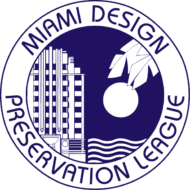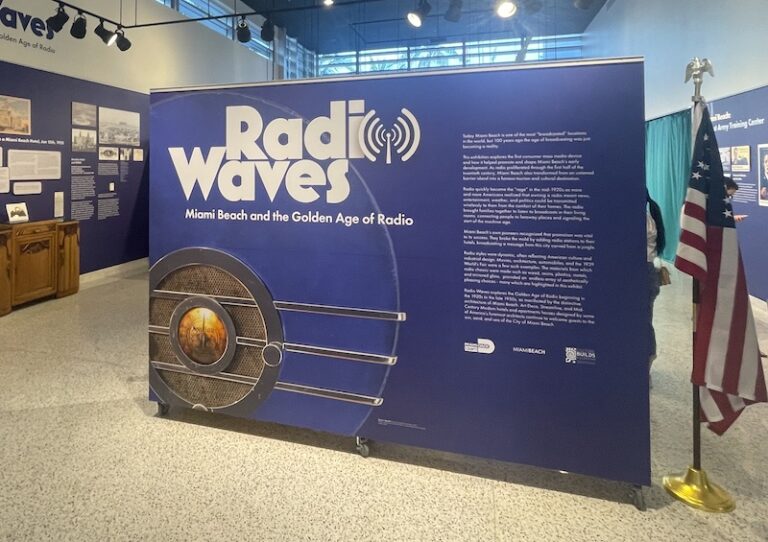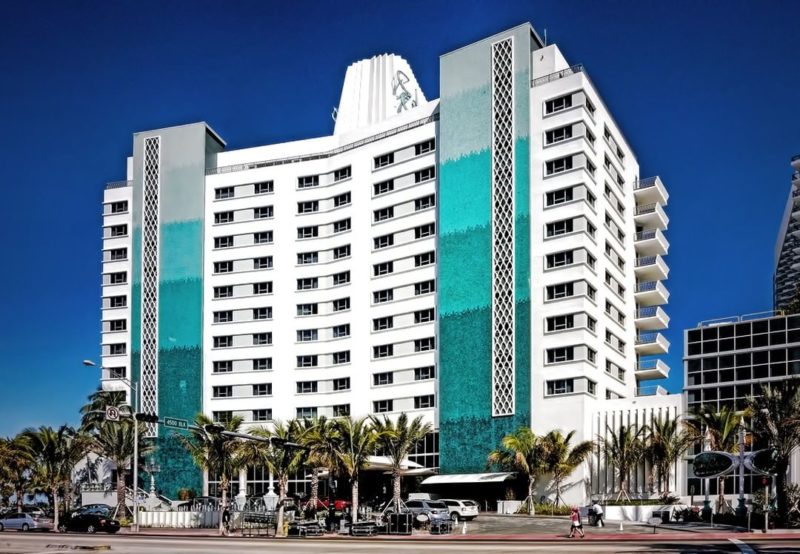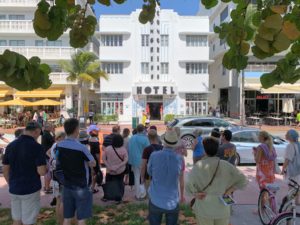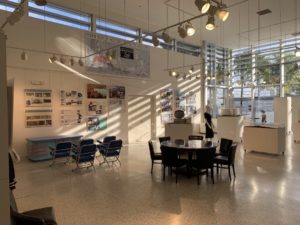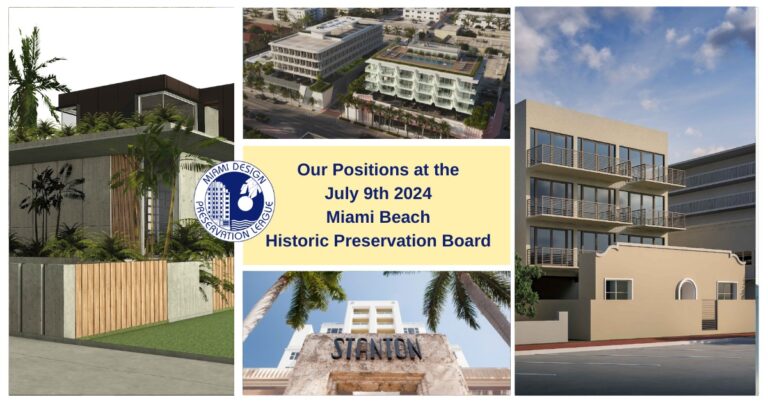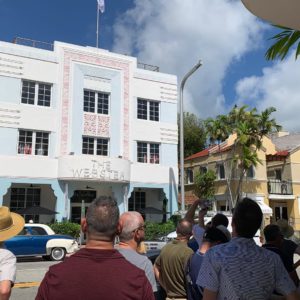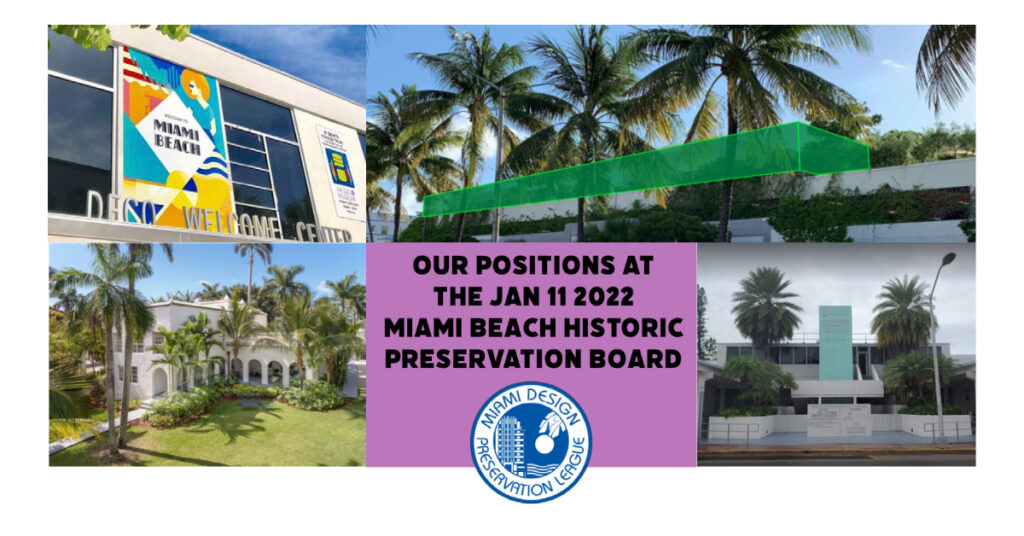
MDPL’s Advocacy Committee has reviewed the following applications and offers our positions below in yellow highlight after excerpts from the City staff reports. Please note, the lack of a position on a project does not indicate support for or opposition to that project. To review the Historic Preservation Board Full Agenda, including other items and public participation information:
CONTINUED ITEMS
3. HPB21-0485, 93 Palm Avenue – Designation of an Historic Site

A presentation by the City of Miami Beach Planning Department to the Historic Preservation Board of a Preliminary Evaluation and Recommendation Report relative to the possible designation of 93 Palm Avenue as a local historic site. If the Historic Preservation Board finds that the property meets the criteria of the land development regulations for historic designation, it may instruct the Planning Department to prepare a Designation Report pursuant to Section 118-591(b) of the City Code of Miami Beach.
City of Miami Beach Staff Report Recommendation (excerpt below, click here to read the full report):
Staff Report: The home located at 93 Palm Avenue is not a noteworthy example of the Mediterranean Revival style as it lacks the architectural detailing, massing and proportioning characteristic of this celebrated style. Additionally, no architect is listed on the building card and staff has not been able to locate any information indicating that the home was designed by an architect. Further, the home has been altered including the elimination of several of the more significant architectural details as noted in the preceding section of this evaluation. The most notable aspect of the home is the fact that Al Capone maintained a residence here from 1928 until his death in 1947.
In addition to a lack of architectural merits, staff has concerns relative to the vulnerability of the home with respect to impacts from climate change and sea level rise. Staff has visited the site and observed that the property to the east has a significantly higher yard elevation. It is also noted that the property to the west (currently a vacant lot) will likely be developed with at least the minimum required yard elevation of 6.56’ NGVD. This will result in both neighboring properties having a yard elevation slightly above the existing first floor level of 93 Palm Avenue. Further, it is important to note that within this area of the City, new habitable floor area is required to be constructed at a minimum of 10.0’ NGVD, approximately 3’-6” above the current first floor level. Maintaining the home at its current elevation will undoubtedly have ramifications in the near future.
Finally, staff does not believe that the association with Al Capone warrants the historical designation of this otherwise unremarkable example of a 1920s single-family home. For the reasons outlined above, staff does not recommend that the Historic Preservation Board direct staff to prepare a Designation Report for local individual designation as an historic site of this single-family home.
RECOMMENDATION
In view of the foregoing analysis, staff recommends that the Board not direct staff to prepare a Historic Designation Report for the possible designation of 93 Palm Avenue, as an individual local historic site, and that the matter be concluded with no further action.
MDPL Position: MDPL is alarmed by the staff report’s recommendation against historic designation of 93 Palm Island, particularly after providing evidence that the site meets 2 criteria for historic designation. MDPL believes that the site meets more than 2 criteria, although only one is legally required for designation eligibility. The City code, which the HPB is required to follow states in part:
“Sec. 118-592 – Criteria for designation.
(a) The historic preservation board shall have the authority to recommend that properties be designated….. If they are significant in the historical, architectural, cultural, aesthetic, or archeological heritage of the city, the county, state or nation. Such properties shall possess an integrity of location, design, settings, materials, workmanship, feeling or association and meet at least one of the following criteria…””
The architectural significance of this home has been all but erased by the preliminary staff report, which superficially mentions architectural elements that have been altered without highlighting the architectural elements and integrity of site which remain.
Built at an early time of Florida’s history, it is unfortunate but not unusual that the building does not have a listed architect. However, the detailing of the building, its massing, scale, and guest house / main house / cabana house configuration is a notable and it remains one of the earliest examples of the waterfront single-family home typology of Miami Beach.
Its association with Clarence Busch – the original developer of the island, underlines another layer of its history that is glossed over by the City’s report. This notable provenance points to satisfying an additional criterion:
(5) Represent the work of a master, serve as an outstanding or representative work of a master designer, architect or builder who contributed to our historical, aesthetic or architectural heritage
Sea Level Rise Criteria response: City Staff also assert that the home is not worthy of designation because new homes are required to be built at a higher in order to comply with the city’s recent zoning ordinances elevating the required height of new construction. In the case of this neighborhood, a new home would be required to be built 3’6” feet higher than the existing home’s floor elevation.
Far from being a reason to demolish, it should be made clear that this is a normal occurrence on Miami Beach. Staff analysis does not fully inform where the existing home is located in relation to existing sea level and when there may be a risk of sea level flooding. In addition, no analysis is provided of the finished floor of the three individual buildings. Such analysis should be a part of the next step in designation report development.
Our own analysis shows that Miami Beach homes continue to be well above sea level. Weighing the existing home’s finished floor level over its historic value to the fabric of our community is a dangerous precedent that could lead to the end of historic designation.
This issue is important particularly when there is no evidence of near-term risk of sustained flooding from sea level rise at the home. Initial analysis shows the finished floor would not be breached by the mean high water line until approximately 2100, based on existing sea level rise projections. Because of this, historic preservation will likely provide incentives to the owner – including waivers that will allow for the renovation of the property without requiring elevation. Without such designation, it would be unlikely that the property could be renovated without crossing the 50% threshold requiring major upgrades and added cost.
MDPL recommends that the HPB proceed to direct city staff to prepare a designation report in order to move towards the next step: a quasi-judicial public hearing weighing evidence and allowing for public participation. In addition, we respectfully request that this item be continued so as to allow MDPL proper time to prepare its case. The current agenda requirement that all documents be submitted 3 business days before the hearing is a burden on our due process, since the staff report came out only 5 business days before the meeting.
Finally, MDPL remains committed to the survey, identification, and protection of historic resources throughout Miami Beach. Single-family homes are an essential part of the built history and story of Miami Beach. This home in particular meets multiple criteria for historic designation. Demolition of this property would be a substantial loss to the social, cultural, and environmental heritage of our community. We formally request that the HPB recommend designation of 93 Palm Avenue.
4. HPB20-0440 a.k.a. HPB20-0380, 550 Washington Avenue


An application has been filed requesting modifications to a previously issued Certificate of Appropriateness for the partial demolition and renovation of the existing building including the construction of attached additions and modifications to original public interior spaces and a variance to exceed the maximum permitted building height. Specifically, the applicant is requesting to modify a condition of the final order to allow for the introduction of new signage on the vertical feature along Washington Avenue, a Certificate of Appropriateness for modifications to the marquee and a variance to exceed the maximum permitted size for signage.
City of Miami Beach Staff Report Recommendation (excerpt below, click here to read the full report):
Staff Report: On November 9, 2021, the Board reviewed and continued the subject application to a date certain of January 11, 2022 in order to give the applicant additional time to address concerns expressed by the Board. The applicant has submitted revised plans, but the signage proposal remains unchanged, with the following exceptions:
- The design for the marquee replacement light box now includes horizontal lines to mimic the appearance of the original marquee sign rails.
- The applicant has provided renderings of proposals for additional signage on the Euclid Avenue façade. Staff would note that these signs are not part of the Board’s review at this time and would require a separate request for a certificate of appropriateness. Additionally, this signage may need to be modified to comply with the sign regulations set forth in the City Code.
Staff continues to be generally supportive of the application as noted below.
On September 8, 2020, the Board reviewed and approved modifications to the existing building including the construction of three small additions and interior modifications. As part of the proposed project, the existing “PARIS” signage located on the projecting vertical fin element along Washington Avenue was proposed to be restored. Additionally, the board imposed the following condition requiring that the Eiffel Tower icon be introduced:
I.C.1.a. The historic Paris signage located on the projecting vertical feature along Washington Avenue shall be restored inclusive of the Eiffel tower icon, in a manner to be reviewed and approved by staff consistent with the Certificate of Appropriateness Criteria and/or directions of the Board.
Vertical projecting fin signage
The applicant is currently requesting to eliminate this condition in order to introduce new signage with the name of the restaurant, “QUEEN”, replacing the existing “PARIS” signage. Two options have been presented to the Board for consideration, one with a Queen of Hearts scepter logo and the other without any logo.
Staff has no objection to the elimination of the condition and the signage replacement, as the proposed signs have been designed in a manner that is consistent with the original open-faced exposed neon signage of the theater. Additionally, as is often the case, the signage for this building has changed over time. The existing “PARIS” signage, which replaced the original “VARIETY” theater signage, was introduced in 1961. While staff believes that both options are suitable, Option 2 with the logo better captures the spirit of the early Post War Modern theater architecture.
Marquee signage
The applicant is also requesting approval for the replacement of the existing internally illuminated marquee signage boards with new edge lit aluminum panels. Staff is not supportive of the removal of this character defining feature of the historic theater building and strongly recommends that the existing marquee be restored in its entirety, including the signage boards. The retention of the marquee features will not preclude the applicant from introducing new signage consistent with the signage currently proposed.
VARIANCE ANALYSIS
The applicant is requesting the following variance:
1. A variance to exceed by up to 57.4 sq. ft. the maximum sign area allowed of 15.1 sq. ft. for wall signs in order to install two signs on either side of the projecting vertical fin with a total aggregate area of 72.5 sq. ft.
• Variance requested from:
Sec. 138-16. Wall sign.
Wall signs are signs attached to, and erected parallel to, the face of, or erected or painted on the outside wall of a building and supported throughout its length by such wall or building and not extending more than 12 inches from the building wall. Such signs shall be governed by the following chart:
Maximum area calculation, Wall Sign Design Standards per District, CPS-2: 0.75 square feet for every foot of linear frontage, with a minimum of 15 square feet permissible, regardless of linear frontage.
The applicant is proposing the installation of two signs on the prominent vertical element above the marquee facing Washington Avenue for a new restaurant and entertainment venue. The signs with the copy “QUEEN’ are proposed to be placed on the north and south sides consistent with the historic location of previous signs on the building. Although the Code allows the re-creation of historic signs regardless of the current regulations, the proposed signs do not technically qualify as a change of copy for a historic sign due to the proposed change in font.
The maximum sign area, based on the length of the street façade for this building, is 15.1 sqaure feet. The larger of the two options proposed has an aggregate sign area of 72.5 square feet, which exceeds the maximum area allowed. Staff finds that the variance request satisfies the criteria for approval based on the retention of the historic building with the distinctive marquee and vertical signage fin that were designed by architect Henry Hohauser for the purpose of sign placement. In addition, the irregular shape of the property with minimal frontage on Washington Avenue, contributes to practical difficulties. As such, staff recommends approval of the variance as proposed.
RECOMMENDATION
In view of the foregoing analysis, staff recommends the application be approved, subject to the conditions enumerated in the attached draft Order, which address the inconsistencies with the aforementioned Certificate of Appropriateness criteria and Hardship and Practical Difficulties criteria, as applicable.
MDPL Position: We oppose the replacement of the historic PARIS sign with a new, larger QUEEN sign. We do not believe this is consistent with the original design of the building. We also request that the patron entry on the west side facing Flamingo Park residential neighborhood be prohibited. The Paris sign may not be original, but it has been in place for decades – far longer than the original sign – and demonstrates an element of our historic continuum worthy of preservation
5. HPB21-0478; 601 Washington Avenue


An application has been filed requesting a Certificate of Appropriateness for the introduction of a sound barrier wall located at the north and west sides of the 3rd level rooftop pool deck.
City of Miami Beach Staff Report Recommendation (excerpt below, click here to read the full report):
Staff Report: On November 9, 2021, the Board reviewed and continued the subject application to a date certain of January 11, 2022 in order to give the applicant additional time to address concerns expressed by the Board. Since the November meeting the applicant has submitted revised plans including the following modifications:
- The height of the proposed sound barrier structure has been reduced by 2’-0” and is currently proposed to be a maximum of 10’-0” tall.
- A portion of the sound barrier located at the northwest corner of the pool deck (adjacent to the Friedman’s Bakery cupola) has been further setback from the deck edge.
- The speakers within the pool deck are proposed to be mounted at a height not to exceed 7’-0”.
Staff believes that the modifications outlined above are improvements over the previously proposed plan. Notwithstanding, and as noted previously, staff continues to have design concerns relative to the impact the proposed barrier wall will have on the contributing facades at the ground level, as well as the character of the surrounding historic district. Additionally, staff is concerned that the proposal to continue the existing vine landscaping vertically along the face of the barrier may not be viable and may not be as successful as what is shown in the provided renderings.
If it is concluded that some form of a barrier wall, in conjunction with further modifications to the sound system, will be able to fully contain all noise within the premises, staff believes that the most appropriate design option would be to provide an additional setback from the entire deck edge, in addition to providing natural landscape screening. This would help minimize the adverse visual impact of the barrier structure, while still providing sound mitigation. Additionally, the applicants Landscape Architect will need to substantiate that the natural landscape screen will be viable in this revised option.
As part of the applicant’s Planning Board progress report (scheduled to be heard on January 25, 2022) a revised sound study and peer review will be presented. However, as of the writing of this report, the peer review has not been completed. This is an important component, and directly related to the certificate of appropriateness request herein, as the sole purpose for the proposed wall is to address issues with excessive and loud music.
Staff believes that before the Historic Preservation Board considers approving a large, architecturally dominant barrier wall such as that proposed herein, even modified in accordance with staff recommendations, the applicant needs to adjust the internal sound system components to the satisfaction of the City peer reviewer, to ensure that sound will not be audible from anywhere west of Washington Avenue. As such, staff would recommend that the application be continued to a future date, so that the applicant’s sound consultant can continue to work with the City’s peer reviewer, to come up with an internal sound system that will not be audible from the west side of Washington Avenue.
RECOMMENDATION
In view of the foregoing analysis, staff recommends the application be continued to a future date. In the event the Board should approve the application, it is recommended that any such approval be subject to the conditions enumerated in the attached draft Order, which address the inconsistencies with the aforementioned Certificate of Appropriateness criteria.
MDPL Position: We support the staff recommendation, in particular the following:
“Staff believes that before the Historic Preservation Board considers approving a large, architecturally dominant barrier wall such as that proposed herein, even modified in accordance with staff recommendations, the applicant needs to adjust the internal sound system components to the satisfaction of the City peer reviewer, to ensure that sound will not be audible from anywhere west of Washington Avenue. As such, staff would recommend that the application be continued to a future date, so that the applicant’s sound consultant can continue to work with the City’s peer reviewer, to come up with an internal sound system that will not be audible from the west side of Washington Avenue.”
6. HPB21-0483, 833 6th Street (South Shore Community Center)

Existing Building designed by Morris Lapidus

Proposed Building
An application has been filed requesting a Certificate of Appropriateness for the design of a new fire station building to replace the existing building proposed to be demolished, and site improvements.
City of Miami Beach Staff Report Recommendation (excerpt below, click here to read the full report):
Staff Report: As noted in the Background section of this report, in 2018, the residents of the City of Miami Beach approved a General Obligation Bond Program that included the introduction of a new fire station facility within South Beach. The City has prioritized the construction of a new fire station because the current Fire Station No.1, located at 1051 Jefferson Avenue, has exceeded its useful life as a fire station and is obsolete in terms of current and future needs of the Miami Beach Fire Department. The site of the current Fire Station 1 building has several significant drawbacks that negatively impact the critical life-safety services and quick response times needed to serve the South Beach district. A new fire station is required to:
- Accommodate Miami Beach Fire Department vehicle and equipment needs.
- Keep up with the growing demand for emergency services in South Beach.
- Speed up emergency response times for the South Beach district (including for the high-
rise developments South of Fifth Street, single-family homes on the islands, locations throughout the MXE/ADCD District, and vulnerable buildings within South Beach historic districts). - House Miami Beach Fire Department equipment in a resilient, structurally-sound, flood- resistant and hurricane-hardened building
- Protect the health and wellness of Miami Beach Fire Department personnel.
In 2019, the Historic Preservation Board discussed the possible location of the new fire station facility in place of the existing South Shore Community Center building located at 833 6th Street and provided several recommendations. Since that time, the City has been working on addressing the Board’s recommendations. Additionally, on September 13, 2021, the Historic Preservation Board evaluated the classification of the South Shore Community Center building and made no change to its Non-Contributing classification.
The applicant is currently requesting approval for the design of a new fire station to replace the existing South Shore Community Center facility. In order to construct the new fire station, the applicant is proposing the total demolition of the existing building. As outlined in Section 118- 563(i) of the City Code, the Board’s review of a Certificate of Appropriateness for the total demolition of city-owned property is advisory with approval or denial determined by vote of the City Commission.
South Shore Community Center total demolition
The South Shore Community Center was constructed in two phases between 1970 and 1975 and designed by Morris Lapidus & Associates in the Brutalist style of architecture. The building has distinctive architectural features and finishes including rough board form concrete finish, smooth concrete finish, exposed concrete blocks in a stacked bond with raked joints and exposed precast concrete beams. While these elements are all characteristic of the Brutalist style of architecture, unfortunately, in this particular instance, they have been severely comprised over the decades with multiple coats of paint and other surface finishes. Additionally, significant and distinct features of the Brutalist design of this building, including the exposed concrete and related finishes, have been compromised and may be beyond repair and restoration. The alterations that have occurred over time, including the introduction of security apparatus and the enclosure of open-air areas, as well as the extremely low finish floor elevation, indicate that the subject structure cannot be effectively adapted to function as a secure municipal facility without severely compromising the original design. Further, as noted in the Background section of this report, in September 2021, the Board determined that the existing structure did not contribute to the sense of time and place significant in the development of the Flamingo Park Historic District. Consequently, staff recommends that the Board issue a favorable recommendation to the City Commission for the demolition of the building.
New fire station facility
The applicant is proposing to construct a 3-story fire station building on the site. The main level of the building is proposed to be located at approximately 16.25’ NGVD and will contain four apparatus bays for emergency vehicle parking and maintenance. In order to access the elevated apparatus bay level, extensive ramping is proposed to be introduced on the east (entrance) and west (exit) sides of the building to negotiate the over 12’-0” level change from grade (3.38’ NGVD). The upper level is proposed to contain sleeping quarters for 20 employees, a kitchen/lounge and a fitness area. The lower level will contain 27 covered parking spaces. An entrance terrace along 6th Street will provide public access to the building. Within the northern portion of the site, access to Meridian Court via a proposed 14 space public surface parking lot will be maintained and a new 7 space employee surface parking area will be introduced.
On December 13, 2021, the Board reviewed and continued the subject application to a date certain of January 11, 2022 in order to give the applicant additional time to address concerns expressed by the Board. The applicant has submitted revised plans including the following modifications:
- The width of the curb cut and a portion of the exit ramp along Jefferson Avenue has been reduced from 73’-7” to 56’-10” allowing for the introduction of additional landscaping along 6th Street.
- The ground level entrance canopy design has been revised and now is proposed to be a projecting frame/eyebrow which successfully recalls a similar element at the east elevation of the South Shore Community Center.
- The louver screening has been eliminated at the stair along 6th Street.
- Additional areas of concrete block in a stacked bond pattern have been introduced
throughout and new windows have been located at the upper level along the rear façade.
Collectively, these modifications represent an improvement over the previous design. While fully supportive of the proposed project, staff does have several recommendations to ensure a successful integration of the new building within the established context of the historic district, including the following: - In order to create a more successful architectural composition, staff recommends that the concrete block in a stacked bond pattern along the south façade be extended westward to the stair.
- Staff recommends that the applicant explore the introduction of solid masonry railings at the southwest stair to reference the existing solid masonry railings of the central feature stair of the South Shore Community Center.
- While supportive of the resilient design which effectively responds to the challenges of sea level rise, staff believes that the magnitude of the ramping systems associated with the extreme height of the first level has an adverse impact on the surrounding historic districts. To this end, staff recommends that the height of the covered parking area be reduced to the greatest extent possible so that the apparatus bay level can be lowered. Staff believes that even a minimal reduction in height will result in a more compatible relationship to the districts.
- Staff has a concern with the austere and contextually incompatible design of the south elevation in front of the entrance and exit ramps. This is critically important along the south side of the site as it fronts directly onto 6th Street and the property is a continuation of an established urban form. In order to address the contextual relationship of the proposed project along the south elevation, fronting 6th Street, staff recommends that the architect and landscape architect further study the treatment of the south side of the entrance and exit ramps. This may include, but shall not be limited to, the utilization of undulating green walls, sculptures, topiary, meandering paths, street furniture and other creative architectural and landscape forms. Additionally, the AIPP component of the project should be considered for these important components of the site.
RECOMMENDATION
In view of the foregoing analysis, staff recommends the request for a Certificate of Appropriateness be approved, subject to the conditions enumerated in the attached draft Order, which address the inconsistencies with the aforementioned Certificate of Appropriateness criteria.
MDPL Position: MDPL is disappointed in the decision of the city commission to grant development waivers because these waivers will lead to the loss of the architecturally and historically significant South Shore Community Center, and the building’s proposed replacement will cause negative impacts on the residents and on the architectural landscape of the Flamingo Park Historic District.
Preservation of the South Shore Community Center
MDPL appeals to the Historic Preservation Board to meet the spirit and letter of the municipal code and preserve the South Shore Community Center. Section 118-501 of the city code is clear that “It is hereby declared by the city commission that the preservation and conservation of properties of historical, architectural and archeological merit in the city is a public policy of the city and is in the interest of the city’s future prosperity.” The city code also extends protections to all buildings within a historic district – whether contributing or not at the time of review.
The South Shore Community Center more than satisfies the criteria to warrant its preservation intact for its architectural significance and its importance in the history of Miami Beach and the nation. Created in response to changing demographics and acute social issues, the Community Center is both part of and the witness to local and national history. Moreover, its association with prominent historical figures (Rep. Claude Pepper and Sen. Edward Kennedy) and an emerging social movement gives the Community Center local and national importance. This historical significance is matched by its architectural merit. It is an extraordinary example of the evolution of the work of Morris Lapidus.
Finally, the HPB had given guidance to the city that a new fire station design should incorporate and adapt the community center building. The proposed design for the fire station only retains an entrance element. Such a plan to completely erase the community center and leave a small recreated appendage in its place, with an overwhelming new municipal building, flies in the face of proper urban planning and is inconsiderate to the low-scale, protected neighborhood surrounding it.
Proposed Fire Station Design
MDPL has concerns about the design of the fire station and its impact on residents and the fabric of the Flamingo Park Neighborhood. Orientation of the fire station with large ramps for fire trucks and emergency vehicles entering and exiting the building will adversely impact residential buildings on the north, east, and west of the site. Noise from the station will be directed toward residential buildings. Headlights and emergency lights will shine directly into the windows because of the elevation of the fire station.
Increases of traffic on two residential streets that are designated as slow streets, and therefore, the placement of emergency vehicles is contrary to the stated policy of the city in regard to the area (e.g., decrease non residential traffic and encourage pedestrian use of streets and sidewalks).
MDPL does not believe that this has been adequately studied, and the Trip Generation Study commissioned by the city from Richard Garcia and Associates is flawed. It assumes that the fire station will have less impact than the daycare center because there will be less trips. This does not consider the difference between fire trucks entering and exiting the block of two separate streets and parents picking up their children. In addition, the Study assumes that the childcare center is to be removed from the area instead of relocated across the street from the proposed fire station.
This study also does not evaluate the impact of the “turning zones for emergency vehicles” on traffic and pedestrians on Jefferson and Meridian avenues. Enormous curb cuts disrupt the continuity along both streets, essentially separating Sixth Street from the remainder of the neighborhood, and the loss of street parking will adversely affect residents and businesses.
In summary, the City is relying upon the HPB to ensure that the certificate of appropriateness standards are upheld. We strongly believe that in this case, the project needs a thorough review and should not be approved as presented.
7. HPB21-0490; 333, 337, 343 and 345 Jefferson Avenue



Proposed Buildings

An application has been filed requesting an after-the-fact Certificate of Appropriateness for partial demolition of the buildings located at 333 and 343 Jefferson Avenue and modifications to the west (front) façade of 343 Jefferson Avenue.
City of Miami Beach Staff Report Recommendation (excerpt below, click here to read the full report):
Staff Report: The subject site is comprised of two platted lots containing four structures. The two primary buildings fronting Jefferson Avenue are classified as Contributing and the two buildings located along the alley are not classified. In 2017, the applicant submitted an application for a building permit (BC1704595) for the renovation and conversion of existing apartment buildings into a new apartment hotel. The building permit was issued on September 30, 2020 and construction work commenced.
On September 23, 2021, Planning Department staff inspected the site and observed that the scope of demolition exceeded that which was approved in the building permit plans. Subsequently, the Building Official issued a stop work notice to the applicant. Consequently, the applicant has submitted an after-the-fact Certificate of Appropriateness request for partial demolition of the buildings located at 333 and 343 Jefferson Avenue, and modifications to the west (front) façade of 343 Jefferson Avenue.
333 Jefferson Avenue
The building located at 333 Jefferson Avenue was constructed in 1939 and designed by H. George Fink in the Mediterranean Revival/Art Deco Transitional style of architecture. The building was originally constructed with four apartment units and four hotel units. Over time, the hotel units were combined to create additional apartments and currently the building contains six units. Renovations to this building noted in the approved building permit include the replacement of doors and windows, structural repairs.
The applicant has verbally indicated that during the course of demolition the existing structural conditions of the first floor wood joists and interior bearing walls were such that they warranted replacement rather than repair, exceeding the scope of demolition of the approved building permit. Temporary shoring has been installed to support the second floor during reconstruction. Consequently, the applicant is requesting the after-the-fact approval for the increase in the scope of demolition of this portion of the project.
343 Jefferson Avenue
The building located at 343 Jefferson Avenue was constructed in 1922 and designed by architects Rowan & Schaffer in what appears to be the Masonry Vernacular style of architecture. The building was originally constructed as two apartment units, one per floor. Over time, the apartment units were divided, and the building currently contains four apartment units. The building permit issued for this building includes the replacement of doors and windows, structural repairs and a change of use from apartment units to hotel units.
Similar to 333 Jefferson, the applicant has verbally indicated to staff that during the course of demolition, the existing condition of the roof structure was such that replacement rather than repair was warranted, exceeding the scope of demolition of the approved building permit. Consequently, the applicant is requesting the after-the-fact approval for the increase in the scope of demolition of this portion of the project.
Additionally, the applicant is requesting approval for an after-the-fact modification to the front (west) façade. Specifically, the applicant is proposing to relocate the entry door and modify one window opening which will require the demolition of a portion of blank stucco wall. While no original plans have been located, the permit history indicates that this façade has been altered over time. Staff would also note that there are no significant architectural features within the portion of wall to be removed and the proposed new openings are consistent with the architectural character of the building. Additionally, the replacement of certain structural elements will result in structurally sound building for the future.
Consequently, staff has no objection to the applicant’s requests for the after-the-fact Certificate of Appropriateness and recommends approval as noted below.
RECOMMENDATION
In view of the foregoing analysis, staff recommends the application be approved subject to the conditions enumerated in the attached draft Order, which address the inconsistencies with the aforementioned Certificate of Appropriateness criteria.
MDPL Position: We are alarmed by the work done without obtaining the certificate of appropriateness. Such unauthorized work puts our historic resources and neighborhoods at risk.
